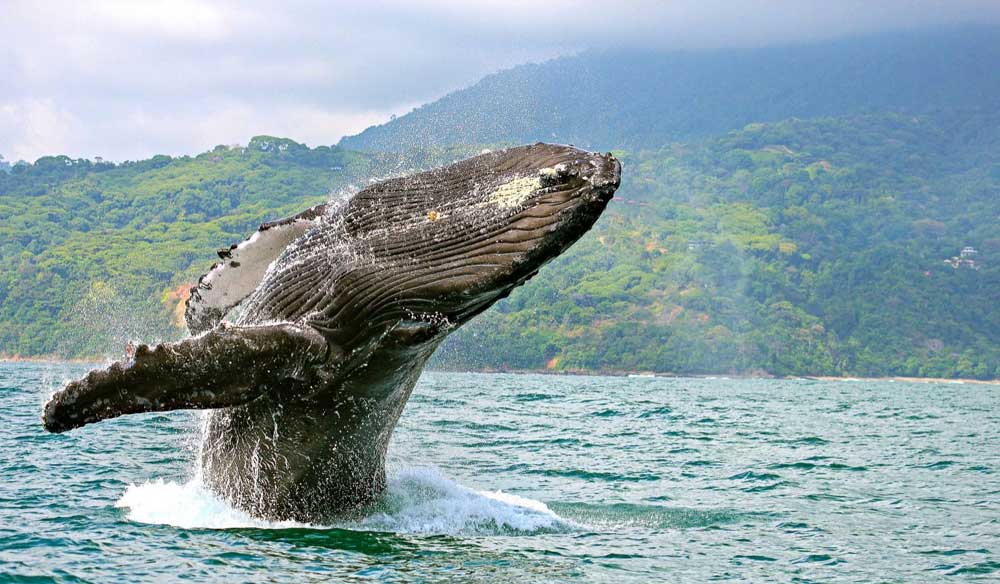Costa Rica
Costa Rica is a relatively small country in Central America, bordered by Nicaragua to the north, Panama to the southeast, the Pacific Ocean to the west, and the Caribbean to the east. It may be small by U.S. standards, but it is large when it comes to wildlife and nature conservation. Costa Rica is a nature lover’s paradise, and home to an incredible variety of plants and animals. Around one-quarter of the country’s land area is set aside in protected areas and equivalent reserves– the largest percentage of protected areas in any country in the world (developed countries average only 9% and the U.S. has only 1% of its landmass conserved in national parks). One of its primary industries is nature travel and its tourism infrastructure is excellent.
World Safaris offers a wide variety of travel options to view Costa Rica’s many natural wonders. More specific information will be coming soon; however, this is a broad overview of some of the many places our travelers will visit and the wildlife that can be seen there.
Tortuguero National Park
Tortuguero National Park is a 110,947 hectare reserve located on the country’s northern Atlantic coast. The navigable waterways in this park have earned it the nickname “Costa Rica’s Amazon.” Three species of primates inhabit the area’s tropical forests: white-faced capuchin, mantled howler, and endangered Geoffroy’s spider monkey. The park boasts 60 species of frogs. It is easy to observe and photograph colorful poison dart frogs in the short trail near the Torteguero Lodge. In the surrounding waterways, one can see river otters, large green iguanas, crocodiles, caiman, and the basilik or so-called “Jesus lizard” that can literally walk on water. Birds abound here with 309 species being recorded, including the green macaw and keel-billed toucan.
The name “Tortuguero” is translated as “land of turtles, and one of the main reasons people flock here is to observe green, hawksbill and leatherback sea turtles lay eggs on the beach. The egg laying season, which spans April to May for leatherback turtles and July to October for green turtles, are the best times to visit the area. The likelihood of seeing turtles is extremely high in season (late July to mid-September), but to protect the turtles, you must be accompanied by a local guide at nighttime, when the best viewing of laying turtles occurs. From September and October many local guides offer tourists the opportunity to “help” turtle nests hatch. However, this may not be good for the turtles. Alternatively, you can walk the beach without a guide in the very early hours or late afternoon before the sun sets, but digging up nests or touching is not allowed. Your chances of finding hatchlings are high at the right time of year.
Drake Bay and Corcavado National Park
Corcavado National Park is a 54,549 hectare tropical reserve on Costa Rica’s southern Pacific coast. It is a treasure trove of biological diversity, which is inhabited by 500 species of trees, 140 species of mammals, 367 of birds, and 117 of amphibians and reptiles, and an estimated 6,000 species of insects. The park protects the country’s largest population of scarlet macaws, as well as a full complement of wild cats, including the puma, jaguar, jaguarundi, and margay. Access to the park is typically by boat from Drake Bay, a small nearby resort town that is accessible by small aircraft. Visits to the park are best made in small groups with a guide.
Monteverde Cloud Forest Reserve
Located high in Costa Rica’s Central Cordilla or mountain range, the Monteverde Cloud Forest is one of the world’s best known private nature reserves. The variable climate and large altitudinal gradient sustain a wide variety of neotropical species, including the jaguar, ocelot, Baird’s tapir, coatimundi, three-wattled bellbird, bare-necked umbrellabird, and the elusive and beautiful resplendent quetzal. In fact, the reserve is one of the best-known and most reliable places to view this incredible bird, with its bright green and red plumage and long tail feathers. This bird subsists on wild avocados and other fruit of the laurel family, which the birds swallow whole before regurgitating the pits. They are very important to seed dispersal.

